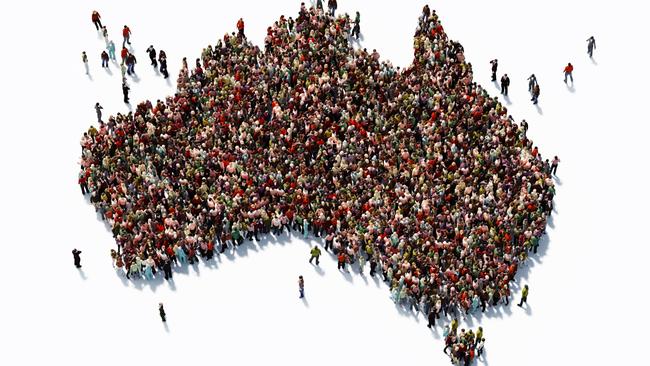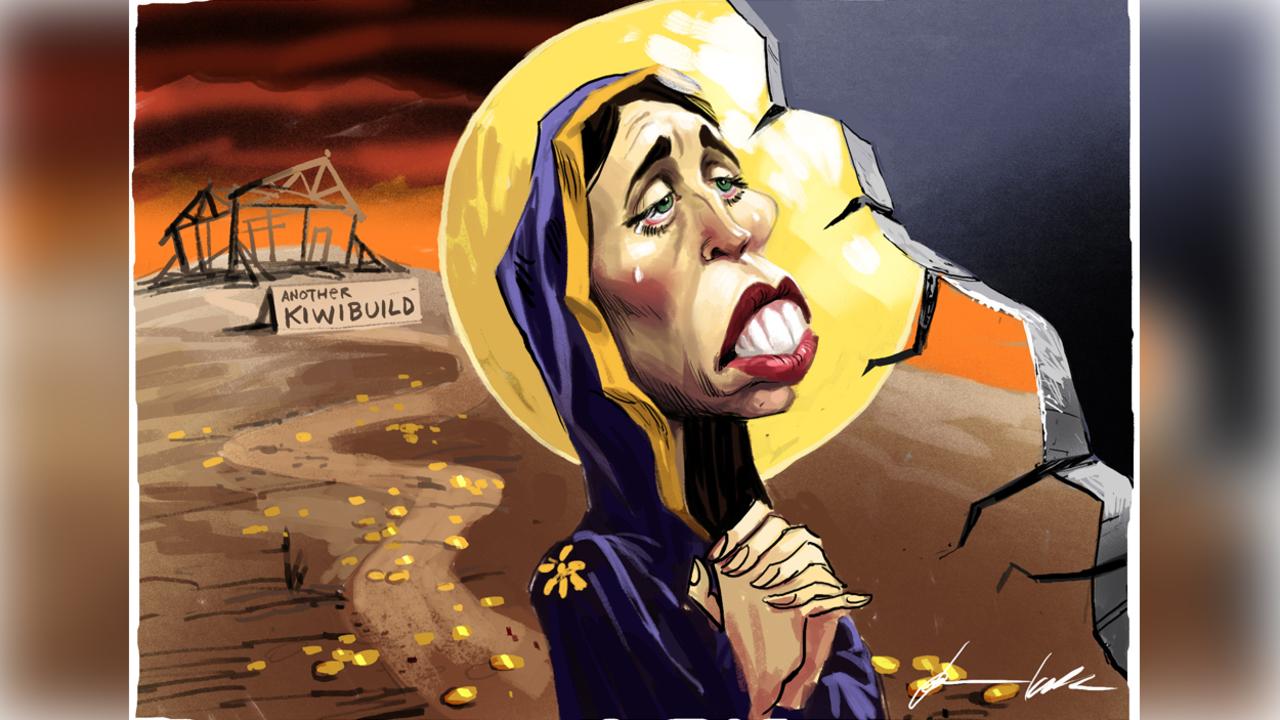
There were important population figures released by the Australian Bureau of Statistics last week. The most important was “the number of overseas arrivals was the highest on record”. That’s right, the highest on record.
Note that only people who are resident in Australia for at least 12 out of 16 months are included in the figures. In 2016-17, 540,000 people arrived in Australia, with 315,000 arriving on temporary visas. Of those who arrived on temporary visas, there were more than 150,000 international students, just more than 50,000 working holiday-makers and 32,000 temporary workers.
Where did these migrants go? Overwhelmingly, Sydney and Melbourne. In 2016-17, almost 40 per cent went to NSW and 34 per cent to Victoria.
Queensland also attracted a relatively large share — more than 13 per cent.
The numbers are substantial. Net overseas migration (arrivals over departures) added 104,000 people to NSW in 2016-17, although quite a few NSW citizens got fed up and headed to other states, principally Victoria. Victoria had a net gain of 18,200 people from interstate on top of the 90,000 it gained from net overseas migration.
I should apologise for the blitz of figures. But there really is no alternative to highlight the sheer scale of migration and the destination of the migrants, thus underpinning the conclusion that our migrant intake is out of control.
For a long time, Home Affairs Minister Peter Dutton had the lame excuse the Coalition government had a better record than Labor in controlling immigration. This was based on the sole NOM figure of 300,000 that occurred in 2008-09, at the height of the mining boom.
But at that time migrants were heading to Western Australia in record numbers. The NOM figure for Western Australia was 44,000 in 2008-09.
The NOM figures for that state have fallen to 15,000. It was a completely different ball game then. Migrants now overwhelmingly head to Melbourne, Sydney and Brisbane (or southeast Queensland). It’s time for Dutton to put the “we’re better than Labor” excuse in the bin.
His real problem is that NOM for the country as a whole is on the rise. There have been two consecutive increases and the latest figure of 262,000 is approaching the figure of 300,000 so derided by Dutton.
The ABS figures also put the numbers in some context.
Labor is promising to clamp down on the number of temporary workers, but the number of net temporary workers in 2016-17 was less than 17,000, which is only 6.5 per cent of the total NOM. Halving their number would make little difference.
The largest single group is higher education students, with 101,000 arrivals in 2016-17. The numbers are higher again in 2017-18. These students need accommodation, services and use public transport. Given their work rights — 20 hours a week during semester time, unlimited at other times — their numbers also have a noticeable impact on the labour market.
If we consider the face of the population across a longer timeframe, we can begin to see what impact the migration settings have had. In 1996, there were 119,000 China-born residents living in Australia — 20 years later, it was 526,000, an increase of 342 per cent. In 1996, those born in China made up 0.7 per cent of the population; in 2016, it was 2.2 per cent.
In 1996, there were 80,000 India-born people living in Australia. In 2016, the number was 469,000. This is an increase of 486 per cent. Their share of the population has risen from 0.4 per cent to 1.9 per cent.
By contrast, the number of people born in Britain and Ireland has remained relatively steady, rising from 1.218 million to 1.284 million. Their share of the population has fallen from 6.7 per cent to 5.3 per cent.
Australia has a much higher proportion of its population born overseas (28 per cent) than most other developed countries. In the US, the figure is only 13 per cent; in Britain, it is 12 per cent, as in France.
Australia’s population has changed dramatically in numbers and ethnic composition. It’s not clear whether there has ever been an explicit debate about these changes. But political enthusiasm for unrestrained growth of migrant numbers has, if anything, intensified in recent years, including on the part of the Turnbull government.
Lured by the false prognostications of Treasury and egged on by the Department of Immigration (now Home Affairs), politicians have embraced the Big Australia message as an economic saviour. Take the recent advice from Treasury that a drop of 20,000 in the migrant intake would lead to the loss of tax revenue of $500 million a year. It’s just nonsense. If this were true, every single one of those 20,000 migrants would immediately be earning more than $80,000.
The secondary applicants have much poorer labour market outcomes than the skilled migrants they accompany. We also know that family migrants are not net tax contributors. Family entrants would make up about 7000 of this hypothetical reduced intake.
What’s even more unforgivable, Treasury will not have estimated the additional costs associated with higher migrant intakes which, admittedly, are largely borne by the states and territories: school places, healthcare facilities, additional infrastructure.
Let’s hope there are sufficient numbers of cabinet ministers who realise that estimates such as a loss of $500m in tax revenue by reducing the migrant intake are plain wrong.
They are meant to get politicians to support excessive migrant intakes — they make the economy look bigger.
The fact that per-capita income falls in the short term is known by all sensible economists.
If the government has any hope of winning the next election, it must do something radical about the migrant intake numbers.
There is a strong case to institute immediately an inquiry into international students, both at the university and vocational college levels, to get to the bottom of the rorts and the misuse of the student visa categories as pathways to permanent residence as well as other issues.
In the meantime, educational providers should be called on to freeze international student enrolments at today’s levels — or preferably lower.
Our cities need a breather and the Turnbull government cannot afford to keep its head in the sand.




To join the conversation, please log in. Don't have an account? Register
Join the conversation, you are commenting as Logout